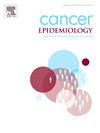1999年至2020年美墨边境地区子宫内膜癌死亡率的民族、种族和地域差异
IF 2.3
3区 医学
Q3 ONCOLOGY
引用次数: 0
摘要
目的调查1999年至2020年美国-墨西哥边境地区EC死亡率趋势的民族、种族和地理差异。方法利用来自CDC WONDER数据库的死亡证明数据,分析不同种族、民族和地理群体的EC死亡率。计算年龄调整死亡率(AAMRs),并采用Joinpoint回归分析趋势,确定年百分比变化(APC)和平均年百分比变化(AAPC)。结果1999-2020年,边境地区发生ec相关死亡3635例,非边境地区发生185887例。非边境地区的aamr较高(2.54比2.21 / 10万),但边境地区的EC死亡率上升更快(AAPC, 1.35;P <; 0.001)高于非边境地区(AAPC, 0.73;P & lt; 0.001)。西班牙裔妇女的总死亡率较低(AAMR, 2.04比2.56 / 10万),但死亡率上升较快(AAPC, 1.30比0.88;P <; 0.001)。黑人妇女死亡率最高(AAMR, 4.71),且呈显著上升趋势(AAPC, 1.02;P <; 0.001)结论:随着时间的推移,西班牙裔妇女和边境地区的死亡率急剧上升,在种族、民族和地理界线上的死亡率差异是明显的。黑人妇女的死亡率仍然最高。这些发现强调了有针对性的公共卫生干预措施的必要性,以解决这些弱势群体的社会经济障碍并改善医疗保健的可及性。本文章由计算机程序翻译,如有差异,请以英文原文为准。
Ethnic, racial, and geographic disparities in endometrial cancer mortality along the US-Mexico border from 1999 to 2020
Objective
To investigate ethnic, racial, and geographic disparities in EC mortality trends from 1999 to 2020, focusing on the US-Mexico border.
Methods
We utilized death certificate data from the CDC WONDER database to analyze EC mortality across racial, ethnic, and geographic groups. Age-adjusted mortality rates (AAMRs) were calculated, and trends were analyzed using Joinpoint regression to determine annual percentage change (APC) and average annual percentage change (AAPC).
Results
From 1999–2020, there were 3635 EC-related deaths in border regions and 185,887 in non-border areas. Non-border regions had higher AAMRs (2.54 vs. 2.21 per 100,000), but EC mortality increased more rapidly in border regions (AAPC, 1.35; P < 0.001) than in non-border areas (AAPC, 0.73; P < 0.001). Hispanic women had lower overall mortality (AAMR, 2.04 vs. 2.56 per 100,000) but experienced a faster increase in mortality (AAPC, 1.30 vs. 0.88; P < 0.001) compared to non-Hispanics. Black women had the highest mortality (AAMR, 4.71) and a significant upward trend (AAPC, 1.02; P < 0.001)
Conclusion
EC mortality disparities are evident across racial, ethnic, and geographic lines, with Hispanic women and border regions showing steeper increases in mortality over time. Black women continue to experience the highest mortality rates. These findings underscore the need for targeted public health interventions to address socioeconomic barriers and improve healthcare access in these vulnerable populations.
求助全文
通过发布文献求助,成功后即可免费获取论文全文。
去求助
来源期刊

Cancer Epidemiology
医学-肿瘤学
CiteScore
4.50
自引率
3.80%
发文量
200
审稿时长
39 days
期刊介绍:
Cancer Epidemiology is dedicated to increasing understanding about cancer causes, prevention and control. The scope of the journal embraces all aspects of cancer epidemiology including:
• Descriptive epidemiology
• Studies of risk factors for disease initiation, development and prognosis
• Screening and early detection
• Prevention and control
• Methodological issues
The journal publishes original research articles (full length and short reports), systematic reviews and meta-analyses, editorials, commentaries and letters to the editor commenting on previously published research.
 求助内容:
求助内容: 应助结果提醒方式:
应助结果提醒方式:


